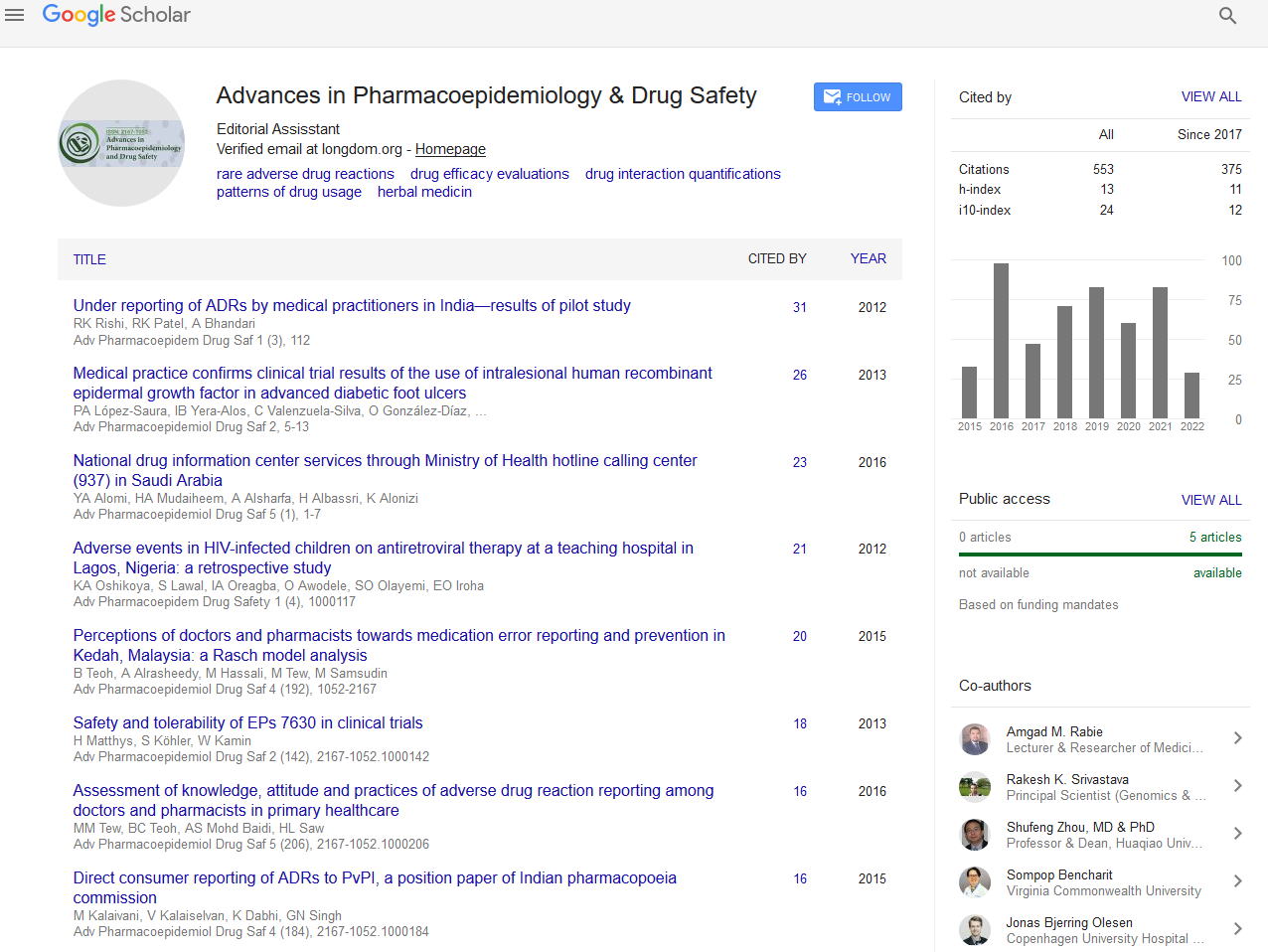Indexed In
- Open J Gate
- Genamics JournalSeek
- Academic Keys
- JournalTOCs
- RefSeek
- Hamdard University
- EBSCO A-Z
- SWB online catalog
- Publons
- Geneva Foundation for Medical Education and Research
- Euro Pub
- Google Scholar
Useful Links
Share This Page
Journal Flyer

Open Access Journals
- Agri and Aquaculture
- Biochemistry
- Bioinformatics & Systems Biology
- Business & Management
- Chemistry
- Clinical Sciences
- Engineering
- Food & Nutrition
- General Science
- Genetics & Molecular Biology
- Immunology & Microbiology
- Medical Sciences
- Neuroscience & Psychology
- Nursing & Health Care
- Pharmaceutical Sciences
Abstract
A Study on Cancer Patients in the Region of Stockholm by Linking Data from Multiple Sources
Lilja B, Miranda-Téllez J, Ljunggren G, Loov SA, Wettermark B, Lissmats A and Henriksson R
Background: Data from clinical practice have only to a limited extent, been used routinely to monitor cancer patients initiated on new drugs. In this study of patients with cancer, focussing on prostate, breast, and skin cancer, two years of individual data from several registries was used to explore the possibilities to monitor patients with cancer.
Methods: This study is based on a research database with more than 78 million records with person-linked diagnoses, drug treatment, and socioeconomic characteristics from eight national and regional registries, for patients with a recorded cancer diagnosis or treated with cancer drugs during 2001-2011. For this cross-sectional registry study 7,378 patients diagnosed with prostate, breast, or skin cancer during 2009-2010, were selected to assess patient characteristics, comorbidities and drug treatment.
Results: Of the population selected from the Swedish Cancer Register with the three major diseases, 3,581 had prostate cancer, 2,760 had breast cancer, and 1,037 had skin cancer. The income was 70.1%, 62.9%, and 53.3% in the prostate, breast and skin cancer group, respectively. Urogenital- and cardiovascular diseases were common in both prostate (47.8% and 52.7%), and breast cancer (52.4% and 42.6%) patients. In skin cancer patients, other skin diagnoses were most common (50.7%) followed by cardiovascular disorders (48.3%). Cancer drugs, mainly mature, were received by 85.9% of patients with breast cancer, 32.4% of patients with prostate cancer, and 4.1% of patients with skin cancer. Additional tumour diagnoses for 5.2% of prostate cancer patients, 4.1% of breast cancer patients, and 17.3% of patients with skin cancer, were found in primary care data.
Conclusion: Access to healthcare data, including primary care, and the opportunity to link records from multiple data sources by the Swedish personal identity number, allow the possibility to study treatment, disease pattern and characteristics in large cancer patient populations.


